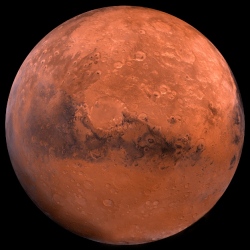
We’ve found over 100 meteorites here on Earth that originate from Mars. But how did they get here? That’s a question that has baffled scientists. Now, thanks to new data gained from the rovers on the surface of Mars (Curiosity and Opportunity), along with study of those meteorites, scientists now have an answer:
A large impact struck the red planet so hard that it sent pieces of Mars hurtling into space all at once, and they eventually fell to Earth.
Mars has its share of craters, but the Mojave Crater, close to the planet’s equator, is where this impact most likely happened. This gouge on Mars’ surface measures about 34 miles wide and is where “shergotitte” (a type of Martian metorite made of volcanic rock) comes from.
To confirm this, scientists studied the minerals present in the crater, as well as those found in the meteorites. Both contained about the same ratio of minerals.
These scientists not only figured out where this specific impact happened, but also when: about five billion years ago. They estimated the crater’s age by comparing it to the number of large craters in the same region. The idea is that an area with more large craters is older, since it’s had more time to accumulate impacts.
However, previous estimates of the meteorites found on Earth had them younger than this. This team of scientists, though, believe factors on Earth are to blame for underestimating the rocks’ ages. Impacts, earthquakes and even volcanic activity broke up these meteorites, and once they reformed, they appeared younger.
